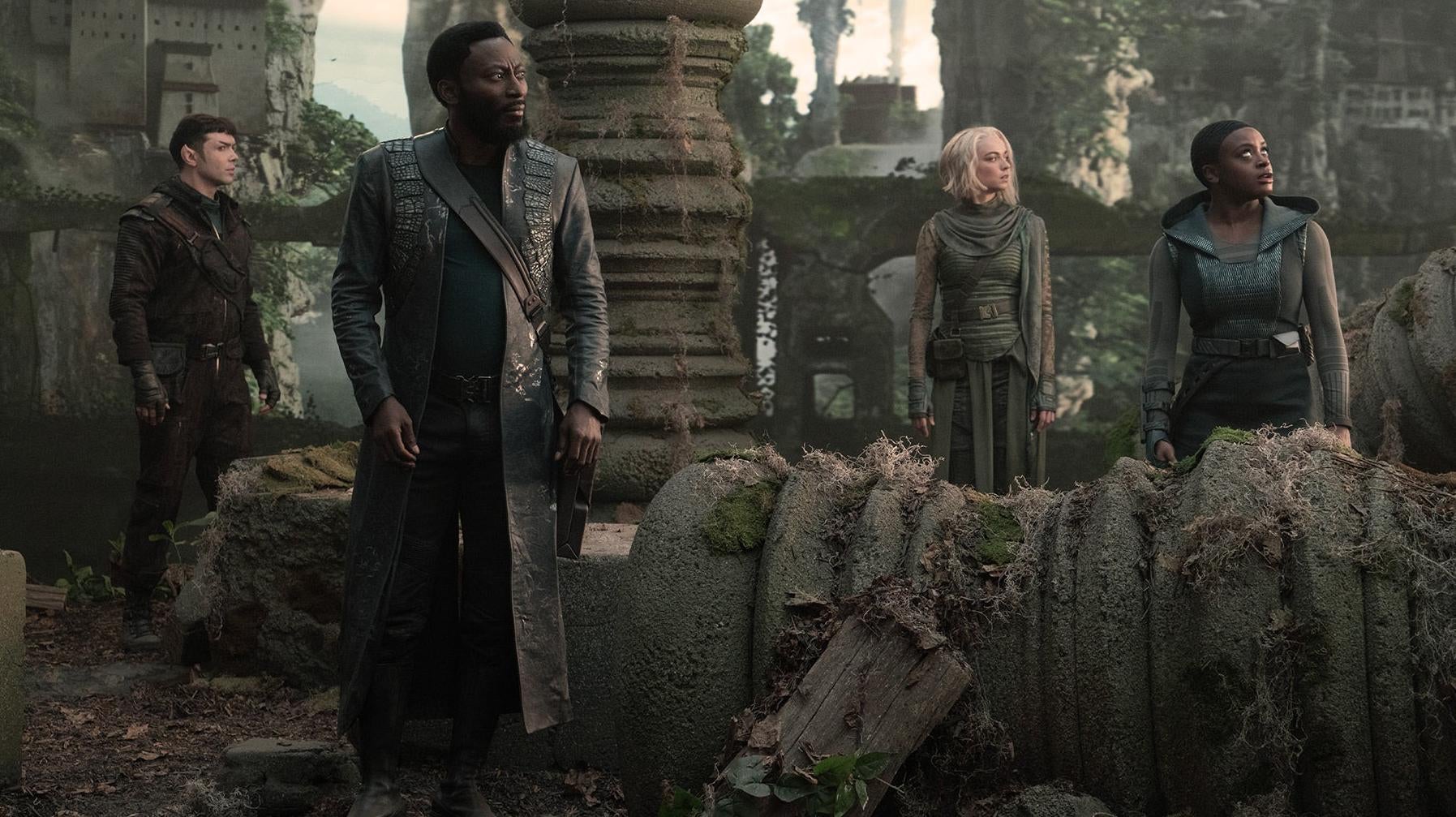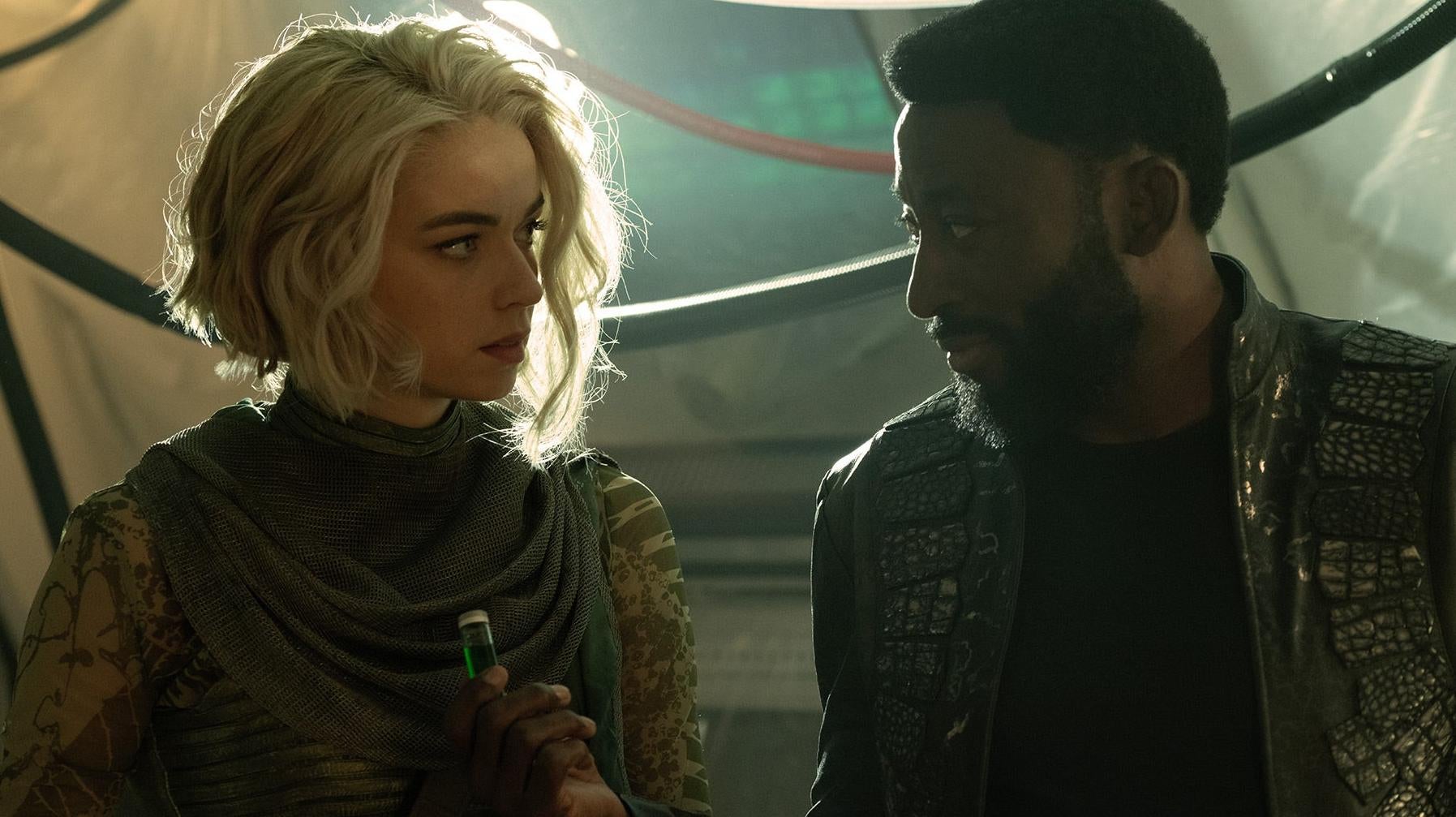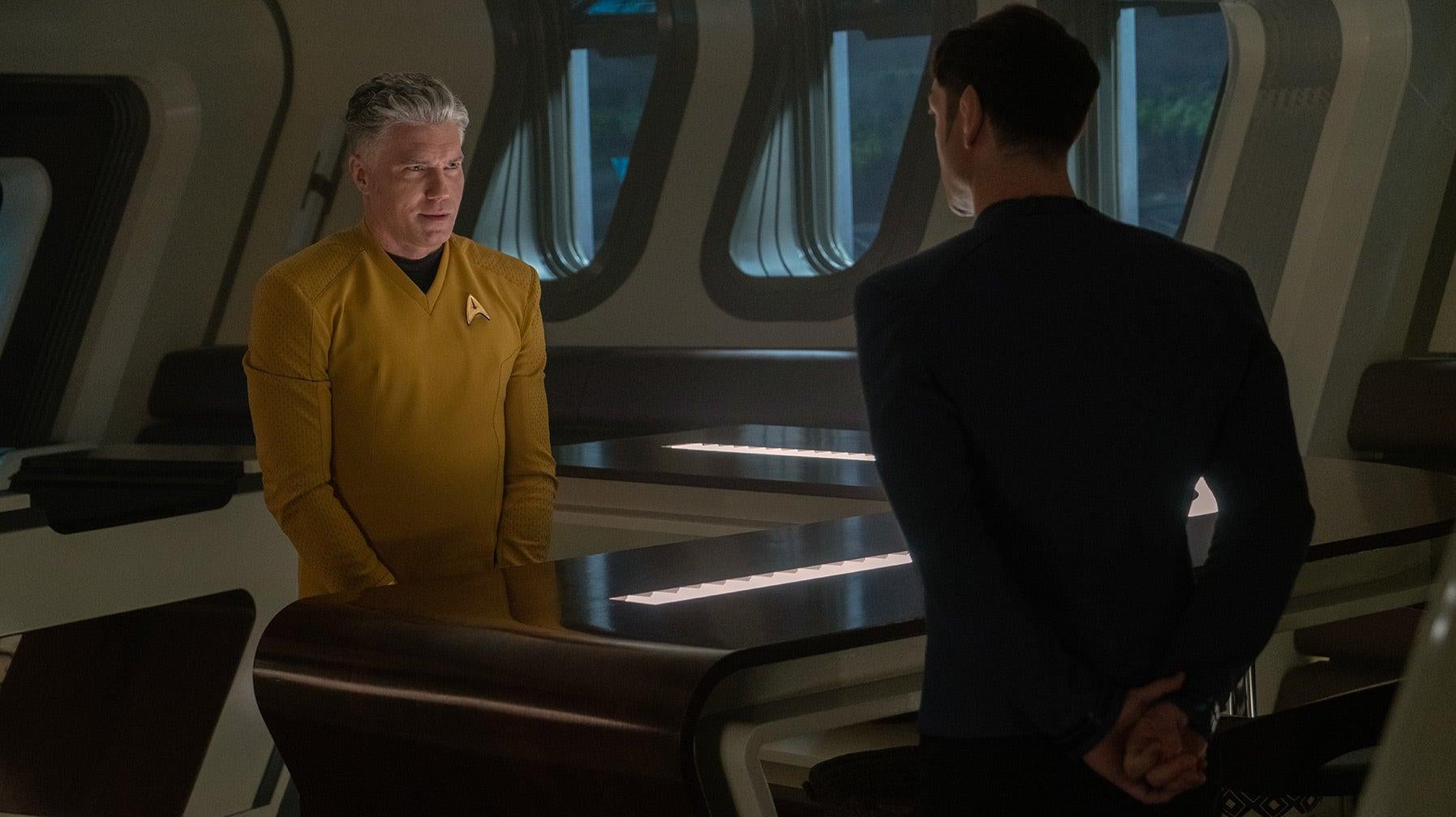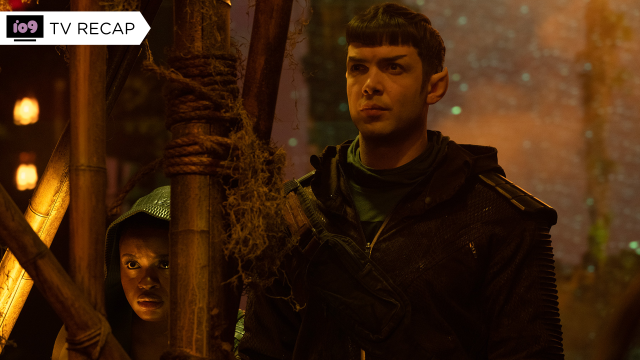Although time had passed on Star Trek: Discovery before its namesake ship jetted out of the 23rd century and into the far flung futures of the 31st, the series largely had other things to dwell on than the state of paradise in the wake of a devastating war with the Klingons. As Strange New Worlds returns, Star Trek has decided now is the time for that dwelling — and what it finds is fascinatingly imperfect.

“The Broken Circle” sees the Enterprise team — trimmed down on the bridge, as Captain Pike leaves the ship in Spock’s hands so he can go help Number One with her whole “so Starfleet found out you were an illegal genetic augment” deal, and trimmed down even further while the ship is undergoing repairs at Starbase One — called upon by (currently former) Starfleet officer and Enterprise security chief La’an. She’s been on a leave of absence to help a fellow child survivor of a Gorn attack at the climax of season one, and has discovered a Federation-threatening movement on the planet Kajitar IV.
What follows are undercover hijinks as Spock — already somewhat shaken by his compromised logical control of his emotions, on top of being thrust into a hell of a tough spot in his first temporary command — decides to steal the Enterprise after being told not to go help La’an by a worryingly recalcitrant Admiral April. This is a fun and goofy opening to the episode, especially because it lets guest star Carol Kane — playing Commander Pelia, an centuries-old Lanthanite with both a questionable career ethic and accent to match — have an absolute scenery-chewing blast when she decided to join Spock and friends in their little mutiny. But then things get decidedly less like Strange New Worlds’ now tried-and-tested camp Trek classicism when the team arrives on Kajitar IV and finds La’an. Instead, we get a kind of fascinating bit of world-building exploration Discovery never quite had the time to deliver.

The world is home to a major dilithium mining operation, and as such, was highly sought-after in the war between the Federation and the Klingons seen throughout Discovery’s first season. Now governed by a rotational sharing of the planet’s mining resources between Klingon and Federation control (and currently under the Klingon’s purview, hampering the Enterprise’s presence), a new insurrectionist faction has emerged, uniting Klingon and Federation citizens on Kajitar alike. The titular Broken Circle wants to start hostilities between the Klingon Empire and Starfleet once again by purchasing black market Federation tech, kick starting a false-flag operation that would lead to a second war — boosting demand for, and the price attached, to dilithium.
War is a concept Star Trek has constantly engaged with, even in the surface-level understanding of its utopia. How the idyllic societies of the galaxy grasp with the ancient push and pull of violent conflict has driven Star Trek to defend its peace time and time again, but it’s rarer for the series, on TV at least, to sit and explore the unease that comes after the end of devastating conflict. The Dominion War shook the galaxy in DS9 in ways Trek had never seen before — but series set post-conflict like Picard or Lower Decks never really sat down to focus on how raw the galaxy was in its wake. It was much the same for Discovery’s Klingon War too, a horrifyingly violent conflict that claimed millions of lives in such a short time, one that the Enterprise at large avoided taking part in, handwaved back in Discovery as due to a five-year exploratory mission. But it’s only in the here and now, when the Enterprise team and La’an realise the stakes, and that at least some of them are people who served directly in that conflict, that Trek is getting to look deeper into the traumas left behind when paradise is rocked in such a way.

And, for the most part, it’s very interesting. Aside from the intrigue of the false-flag operation — the Broken Circle has been surreptitiously gathering parts to refit a Starfleet ship it hopes it can throw at a hailed Klingon D7, forcing it into a confrontation that would make it look like the Federation is trying to retake Kajitar IV for itself — “The Broken Circle” drills down specifically on two characters who didn’t get nearly enough time in season one, Dr. M’Benga and Nurse Chapel. It brings much appreciated nuance to the medical team, and it that draws them together; when they’re discovered by the Circle trying to provide medical relief to miners poisoned by weapons tests, they’re captured and forced to treat the group’s own injuries, exposing Chapel and M’Benga both to traumas of their own past serving during the war. Further still, when it comes time to escape, you see the duo grapple with the horrors of wartime service — and what they both needed to do even as medical practitioners to survive it.
In a frankly somewhat ridiculous and yet still emotionally jarring sequence, the doctor and nurse inject themselves with a potent psychoactive medicine that M’Benga had at least seemingly used more than once during the war, giving them the temporary strength and resilience to just barrel through hallways of their captors. Doing so fills M’Benga in particular with a genuinely distressing rage. This is partially due to the drug, but also his own lingering traumas from the war; it reminds us that while the heroes we see in these shows try constantly to, and often do, live up to the lofty ideals of Starfleet, they are also still just people — people that can be hurt and threatened and traumatized, and survive those experiences, and be changed by that survival even as they try to go back to the way they were before it. “We’re a most promising species,” James Kirk will go on to tell Spock in the classic Trek episode “Arena,” “as far as predators go,” in an acceptance in his self that there is both the idealised man he wants to be and a more primal, impulsive instinct, just like the one we see M’Benga display here beating a Klingon to near death for information. It’s even there outside of war trauma, as we see a still emotionally compromised Spock wrestle with whether or not he could bring himself to fire on the false-flag ship, knowing he could kill the captive M’Benga and Chapel in the process.

This is darker territory for Strange New Worlds. We spent much of season one revealing that even in the most dire situations, our heroes were the heroes of Starfleet — the ideal, the evangelized, the standard for all to live up to. Watching an amped-up Chapel and M’Benga just destroy people, petrified at both what they’re doing and their need to survive, seeing the raw emotions of the Klingon War bubbling up through them, gives us a potent reminder that these heroes are indeed rightly fallible, and can falter from those lofty highs — and that it can be neccessary and cathartic to make the sacrifice to do so for the greater good.
Whether or not Strange New Worlds will continue to touch on those raw nerves as season two progresses remains to be seen — by the end of “The Broken Circle” the titular group is resoundingly defeated, their ship destroyed by the Enterprise and, with Spock negotiating via a barrel of Klingon Bloodwine, Starfleet’s intentions are proven diplomatic to the Klingon officer who nearly fell victim to it. Everything is fine, even back at Starbase One when April lets Spock off for stealing the flagship of the Federation with only the price of a Bloodwine hangover. The Enterprise even gets a new chief engineer out of the deal, when Pelia decides to stick around. Perhaps this is all the wartime trauma that Strange New Worlds wanted to explore, and in its episodic structure, largely all it needs to before it moves on to the next big thing.

But as Admiral April reveals in the episode’s closing moments, another war could be on the horizon, this time with the Gorn, as raider ships begin encroaching on Federation space — and things could be about to get much grimmer for the Federation once again. And if the mental war wounds of the last conflict still have such a grip on even the heroes of the Enterprise, then what costs will be made if they are actually all on the front lines of a new one? Strange New Worlds might be willing to put just what its idealised heroes are really made of to the test.
Star Trek: Strange New Worlds streams new episodes weekly on Paramount+.
